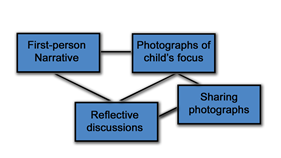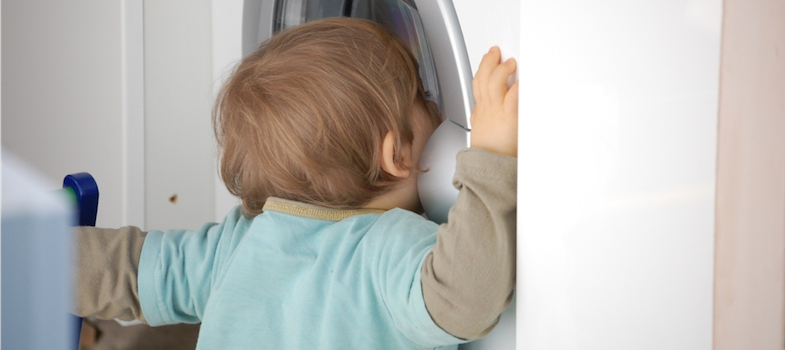The Four Perspectives
In-the-Picture was developed as a way to engage with the experiences of very young children with learning difficulties, but can also be of value to other people who appear not to be responding positively to our dominant ways of communicating. It is an approach that is not dependent on the child being of a certain age or perceived level of understanding.
It involves four perspectives.
Perspective 1: A first-person narrative observation of the child in the learning context
Perspective 2: Photographs of the child’s focus of interest
Perspective 3: Reviewing the photographic record with the child
Perspective 4: Reflective discussions with the practitioners and family involved

In-the-Picture was developed by researchers as a way to engage with children’s experiences, but has subsequently been recognised for its value to practitioners working with very young disabled children in a variety of contexts. It is seen as a way to explore the views of children who are sidelined by the dominant means of communicating. But it is also a very simple and flexible approach, which allows practitioners to draw upon the four perspectives in ways that suit the situation in which they are working. It does not claim to capture an “objective” or “true” picture of the child’s perspective; it aims to offer insights into their interests. It is intended as a tool for reflection, a starting point for discussion and a facilitator of planning. It should not be time-consuming nor should it be followed in a standardised manner. Both Portage Home Visitors and Early Childhood practitioners in various settings have used In-the-Picture during their sessions.
In-the-Picture is intended to provide an opportunity to step back and reflect in a way that suits the child, practitioners and family and the situation they are in. In some situations, all four perspectives may prove to be effective, but as we will explore throughout the course, that does not have to be the case. As with all learning situations some activities will suit some people more than others. People who use this approach, however, talk about how it enables them to step back, to appreciate the child as an active participant in ways that they had not previously noticed, to share that appreciation and to use it to develop opportunities for learning and social interaction.
